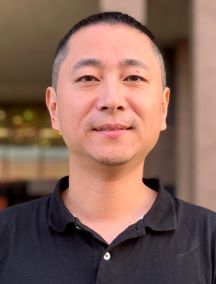Faculty
Jiangyong Jia, Professor
Joint with Brookhaven National Laboratory

B.S. University of Science and Technology of China, 1997
Ph.D. State University of New York at Stony Brook, 2003
Research Fellow, Columbia University, 2003 - 2006
461 Chemistry
Phone: (631) 632-7905 | BNL 344-8433
Email: jjia@bnl.gov
Relativistic Heavy Ion Physics, Nuclear Chemistry
More than 99% of the normal matter we see every day exists in protons and neutrons (nucleons). Nucleons are further composed of quarks and gluons, whose interactions are well described by the Quantum Chromo Dynamics theory (QCD). Under normal conditions, quarks are confined inside the nucleons and can only be detectable on the scale smaller than 0.3 femtometer. At extremely high temperature and density, matter turns into the so called Quark-gluon plasma(QGP) phase where quarks become deconfined. This phase is believed to have existed during the first 10 microseconds after the universe was born in the Big Bang.
The QGP can be created by heating matter above the temperature of 170 MeV. Experimentally, this is done by colliding two large nuclei (typically Gold or Lead) at very high energy. The resulting hot and dense fireball is expected to expand under its own pressure, and cool down. Various properties of the QGP such as temperature, pressure, chemical potential, transport coefficient can be deduced from thousands of final state particles emitted from the fireball and detected with large scale particle detectors surrounding the interaction region.
Our research is focused on understanding 1) the details of the expansion process which can be deduced from the flow pattern of the detected particles. 2) The transport properties of the QGP by studying how the various self-generated probes such as jets and photons are modified by the fireball. Our research is carried out at the Relativistic Heavy Ion Collider (RHIC) at Brookhaven National Laboratory and at the Large Hadron Collider (LHC) at CERN. Our group is involved with the STAR and ATLAS experiments respectively, at each of these accelerator facilities. Both experiments provide a diverse array of thesis research topics, an excellent working environment involving interactions between hundreds of scientists in the field, and unique opportunities for career development.
